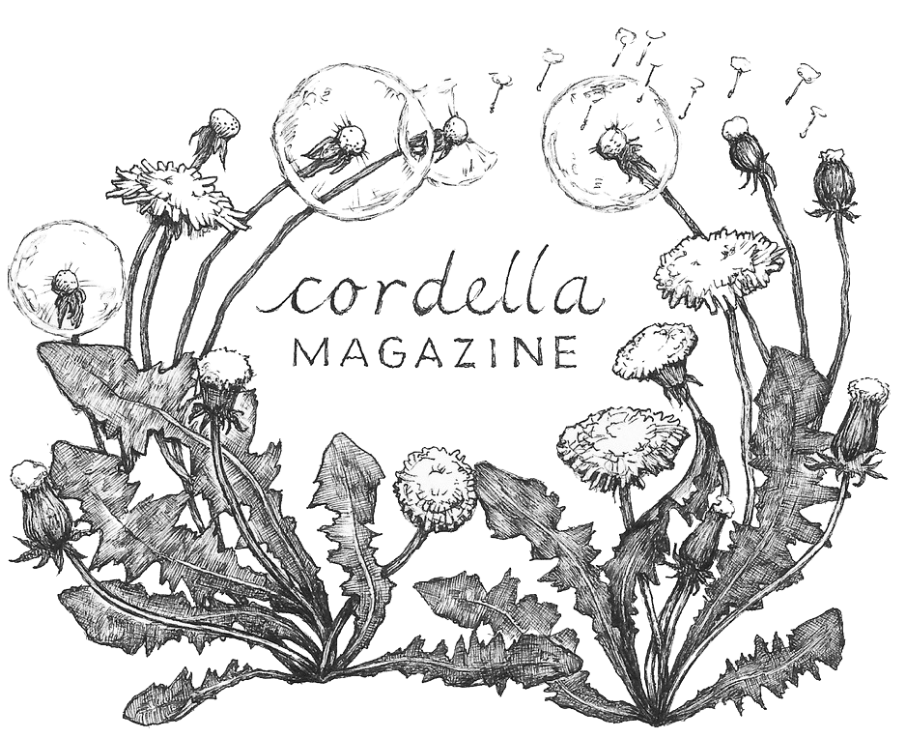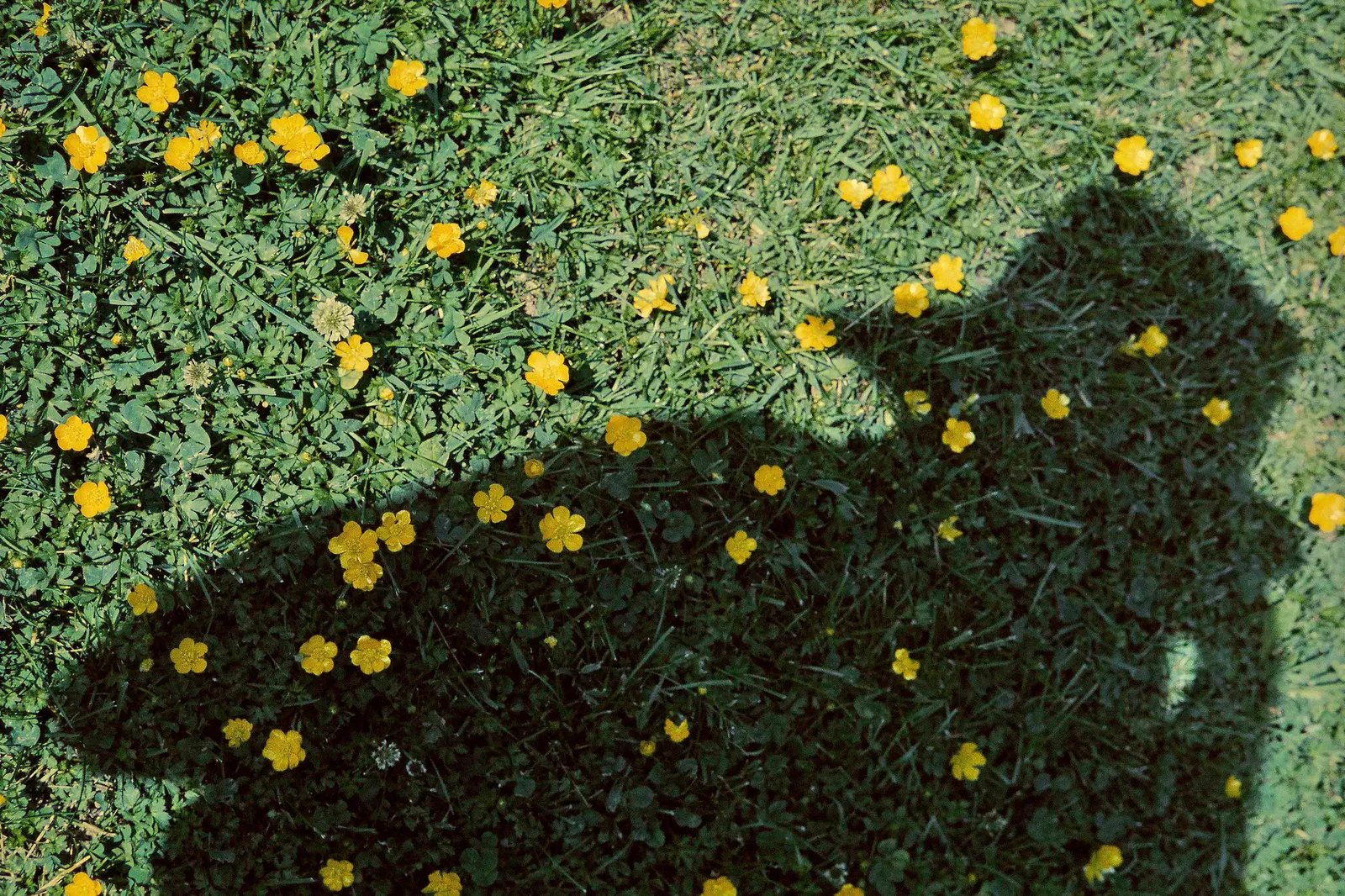What She Carries Around
China Braekman
Vivian Maier, Self-portrait, Chicagoland, 1975
It’s understood in my family that we do two things before we start eating—we say a prayer, and we take a picture. Over the years, we’ve developed a tremendous amount of discipline and patience with this practice. When my cousins and I were children, and when our parents were younger but more exhausted by parenting, the pre-dinner picture was an ordeal. It was a tedious dance that required lining us into a careful arrangement and getting all the kids to look into the lens at once. The whole event came at the cost of many frustrations, both from those who got tired of posing while the food got cold, and from those who knew that we didn’t have a good picture yet. Today, with fewer babies around, we dutifully line up, knowing that the faster we get into formation and smile into the camera, the faster we will be relieved of the embarrassment as other diners in the restaurant watch in amusement, or worse, roll their eyes.
The last time we did this dance was for the 90th birthday of my grandmother, who goes by Pó Pó. We took dozens and dozens of pictures on our phones, each of us capturing slightly different angles of the same moment. Picture-taking gave rhythm to the event; in fact, it constituted an event in and of itself. Before pictures were so easily stored on our phones, Susan Sontag presciently wrote that photography had become “one of the principal devices for experiencing something, for giving an appearance of participation.” Amidst the gifts and the balloons and the flowers, offering ourselves up to the lens was our way of telling our matriarch that we loved her.
—
Pó Pó desperately seeks out those pictures. After each family function, she pleads, Promise, you’ll send me those. When I eventually send them, she forwards them to the extended family. She’ll print some and pin others to the wall. Either way, she’s reassured to know that the pictures exist somewhere on one of her devices. I can’t help but see the hoarding tendencies that are pronounced in our family and, as I’ve learned, in many immigrant households. There’s a distinctive aesthetic, one that was defined for me by plastic bags, Tupperware, rubber bands and carboard boxes. In Pó Pó’s house, the interior design is an assemblage of materials and things that have been stacked up, patched up, taped up, wrapped up, and moved around from one room to another. I’ve spent a lot of my life wondering about hoarding – why we do it, when it goes from being quirky to dangerous, and how my own desire for minimalism is in fact a luxury that my generation was the first to have been granted.
Although the tendency has diluted over the generations, we still have an undeniable tendency to hold onto things. Some relatives, mostly women, have collected hazardous amounts of junk and were forced to get rid of their belongings and even move from their homes. There is my great-grand-aunt who left piles of things on the stove and started a fire. There is my great-aunt who always carries with her a paper bag filled with other paper bags. And there is my grandmother, who insists I send her every picture I take. For my family – for all of us – the urge to carry our things around with us has taken on a digital form, through the acquisition and stocking of pixels.
I have nearly 200 photos from Pó Pó’s birthday, and more than 11,000 from this past year, idly sitting on my phone. Sometimes I wonder if I will ever look at my photos again and then, the thought of looking back on my archive terrorizes me. There’s an inverse logic at play here: as my archive grows, the time I have left to consume it dwindles. Recently, I sought solace from the Internet and typed into my search bar, photography as hoarding. The first link directed me to a Reddit thread that started with this question, “What do you guys do with all the photos you take?” The responses were varied. None of them gave me the silver bullet I was looking for, although I did experience that strange, anonymous solidarity that one gets from online forums. One of the responses stood out:
Memory is so cheap that when a hard drive is full I just buy another. The main reason I keep all the junk is because I think of them as an archive for the future. Years from now what and who is in the background of those crappy photos may have use to someone. Since memory is so cheap I just keep them.
I’m moved by the user’s altruistic motive for justifying digital clutter – that one man’s trash is another man’s treasure and therefore, that one should continue to produce and hold on to the proverbial garbage. At the same time, I worry about the notion, so matter-of-factly stated here, that digital clutter eventually does find its way into the material world. The platform to which I carelessly upload my pictures, and which we poetically call the cloud, is a real object made of aluminum and plastic – one more thing we will be leaving behind. I worry about our reliance on these things. The Reddit user was writing about external hard drives, but it’s not a stretch to see how our own human capacity for remembering shrinks as a result. Indeed, memory is cheap.
—
Photographs are for remembering. And sometimes they’re for reminding. We take pictures as notes-to-self, leaving behind like a trail of white pebbles. A couple years ago, we got Pó Pó a digital photo frame, a small screen where all of us could upload our favorite pictures, which were played on loop as a personalized slideshow. We’re all constantly uploading pictures to her frame, including accidental screenshots of pharmacy receipts. My favorite is a picture that Pó Pó uploaded herself: she was on a Zoom call with friends and, unsure how to capture the moment, she pulled her phone out and took a picture of her computer screen. You could see her reflection in the little Zoom square, brandishing her phone with her two hands. Once the image was on her phone, she took a screenshot of it. Finally, she uploaded that screenshot to her digital frame. I got the notification on my phone and stared at this meta-image for a long time on my own little screen. Producing an image and then reproducing it and reproducing it again; it becomes something to cling to. It becomes a track that helps you find your way.
The urge to squeeze our world into small squares is about verifying our existence and confirming that, yes, in fact, I am real. I’m not referring to the photos that we curate for the outside world but of those that we never share with anyone and whose existence is critical precisely for that reason. Few stories illustrate this as well as that of photographer Vivian Maier, whose collection of street photographs wasn’t discovered until after her death in an auction. Maier started working as a nanny in Chicago in the 1950’s. A very private woman, she would wander the streets and take photos of passers-by, billboards, and her own reflection in rearview mirrors. She never showed her pictures to anyone; by the time they were discovered, most of her film rolls hadn’t even been developed. Maier took many self-portraits – always in subtle ways, framing herself in a corner below a boisterous urban scene. She notoriously took pictures of her own shadow, tracing the distinctive contours of her brimmed hat over banal backdrops: a wooden fence, a concrete sidewalk, a lawn. The photos look like they were taken at random. One of them depicts a grassy patch with a splattering of yellow flowers. Her shadow covers half the frame, claiming clearly, I was here.
—
My last year in college, I had a semester to produce a photo book. I learned how to sequence photos in a series and how to sew book bindings. My book would be about my grandparents and the home where they had raised my mother and her siblings. I would regularly visit them to shoot their portraits and take pictures of the house – the holiday cards stuck to the fridge, the lunch trays with bowls of egg drop soup, a corner of the room covered in colorful 70’s wallpaper. To my own photos, I added archival images, pictures that my grandparents themselves had taken. I spent hours flipping through old albums, re-living moments I had witnessed, and some I wasn’t born for. But the more interesting finds were not the pictures that had been selected for the albums; they were those still stacked in paper envelopes, straight out of the CVS printing service. Enclosed in one such envelope was a Maier-esque self-portrait by Pó Pó. I was just born, and Pó Pó had flown in to help out with the baby. In the picture, she’s holding a camera in her right hand and holding me, a newborn, in her left arm. She is taking her (our) portrait in the mirror. The photo is blurry, and the flash covers her face. I’m not sure anyone has ever seen this print since it made it out of the camera. I like to think that this photo is like a secret that’s been kept between us. That we are uncertain what purpose our photos will serve, but that we continue to make them anyway, is indeed like a ritual. It too is a prayer.
China Braekman
China is a writer and dancer based in Jersey City, NJ. Originally from France, she has spent the last ten years in the New York / New Jersey area. She has won first prize in the 2024 Northwind Writing Award for nonfiction, sponsored by Raw Earth Ink. She currently works at the International Rescue Committee, an organization that supports refugee resettlement in the US and delivers humanitarian aid in crisis-affected areas around the world.


